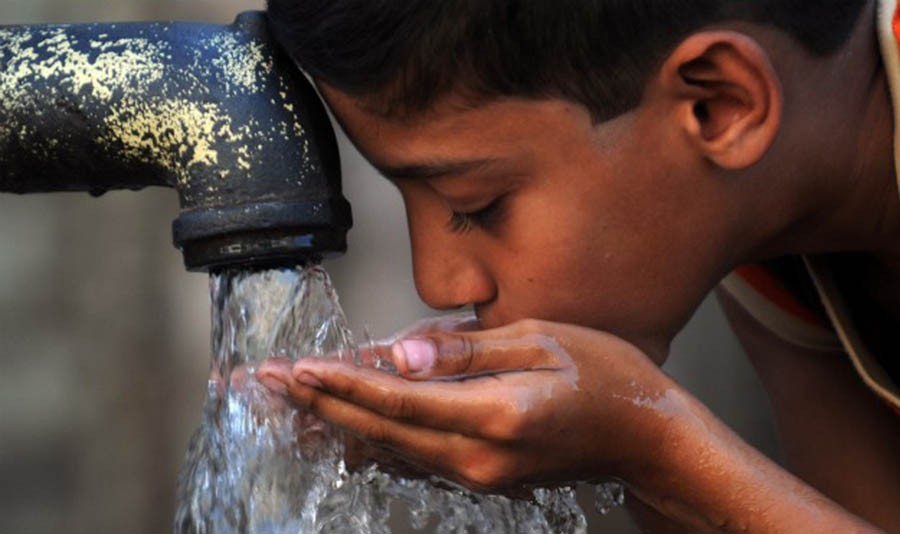
A majority of Pakistan’s population is exposed to unsafe and polluted drinking water

Scarcity of clean drinking water is becoming more obvious in Pakistan because of rising population, limited resources, and less attention to focus on water management.
More than a billion people in the world do not have access to safe drinking water. In Pakistan alone, more than 40 million people lack access to safe drinking water and 50.7 million people lack access to improved sanitation.
Pakistan, according to reports, is facing unprecedented shortage of clean drinking water also because of the lowest recorded levels of water in the country’s dams.
The availability and development of water resources in Pakistan is gradually turning into a crisis and has reached at the level of inter-provincial conflict, which needs to be resolved immediately.
According to a report of Pakistan Council of Research in Water Resources (PCRWR) released a few yeara ago, shortage of affordable and safe drinking water is showed in Pakistan with an estimated 44 per cent of the population without access to safe drinking water, while in rural areas 90 per cent of the population lacks such access.
According to a World Bank report, now Pakistan falls in the list of countries that are currently facing sever water crisis. The PCRWR report further highlights decrease of quantity and quality of water. It is also deteriorating badly due to municipal, industrial, and agriculture waste.
Over exploitation of the natural resources and discharge of hazardous waste into water bodies without proper treatment is one of the major concerns.
According to government data, Punjab has the best rural water supply amongst all the provinces. Rural water supply situation in Khyber Pakhtunkhwa is also bad but the worst situation is in Balochistan.
A majority of the population of Pakistan is exposed to unsafe and polluted drinking water, according to Economic Survey 2010-11. As per World Health Organisation (WHO) report 80 per cent of the diseases are due to unhygienic conditions and unsafe drinking water.
The Millennium Development Goals (MDGs) include a target to halve the fraction of the world’s population without access to water and sanitation by 2015.
Pakistan also approved the National Standards for Drinking Water Quality (NSDWQ) in 2010 in order to improve water quality and to provide public with the safe drinking water.
The governments also started focusing on access to improved water resources. According to reports, around 95 per cent of the urban and 87 per cent of the rural population have now access to various areas of improved drinking water supplies with household connection of 48 per cent and 19 per cent respectively.
Less than one per cent of the population has to travel more than 0.5 km to the source of drinking water as compared to two per cent at the start of the decade. However, access to water remains difficult in southern Khyber Pakhtunkhwa, parts of Balochistan, Tharparker, and Cholistan.
The Punjab government has made plans for most cities in the province to be covered under a potable water project by 2017. It aims to install more than 300 water filtration plants in different cities. However, selection of a firm to install filtration plants under the multi-billion-rupee Punjab Saaf Pani Project has been delayed further.